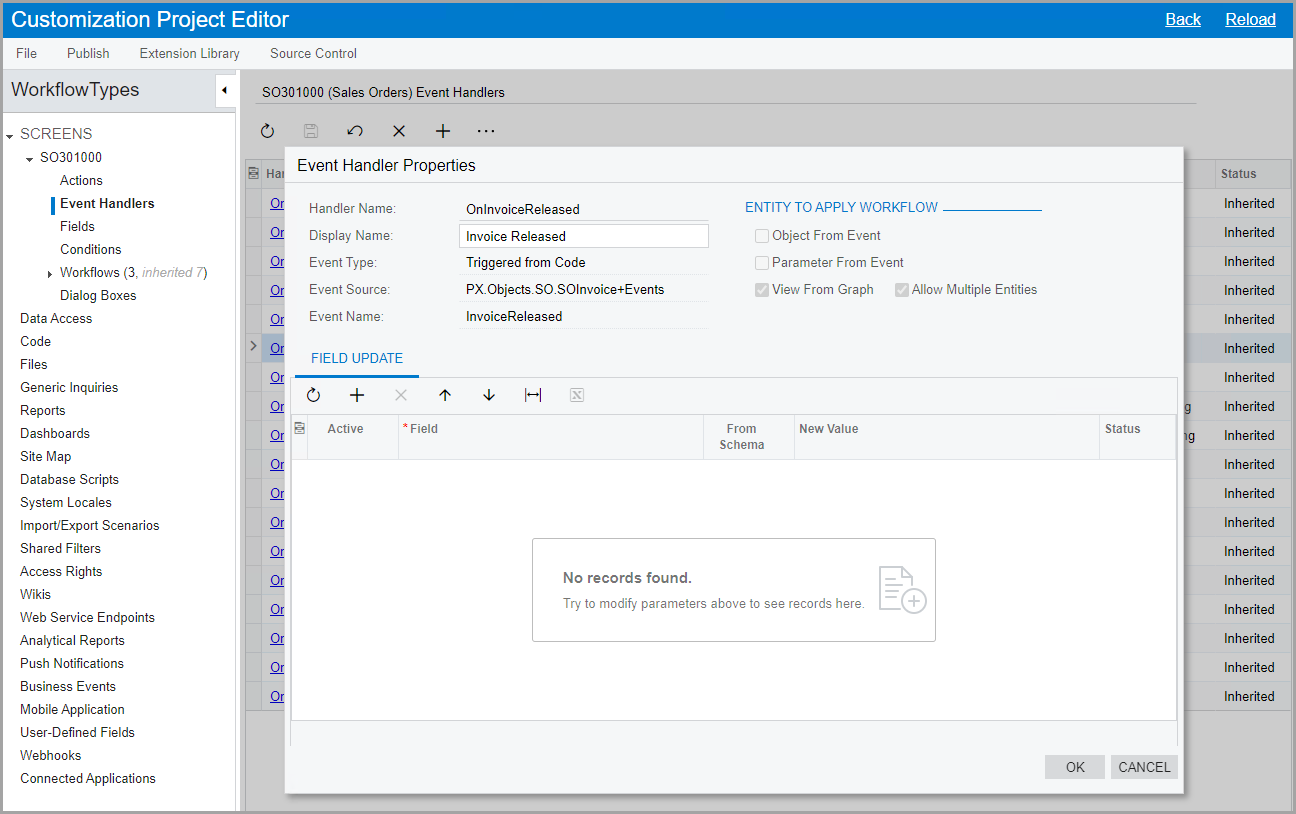Event Handlers: General Information
MYOB Acumatica supports two types of events and event handlers that process these events. Events of the first type are triggered when changes occur to certain fields of a form. Event of the second type are triggered from the code.
For both types of events, you can configure event handlers on the Event Handlers page of the Customization Project Editor, as described in the following sections, or in the code. For details on how to configure events and event handlers in the code, see Workflow Events: General Information.
Learning Objectives
In this chapter, you will learn how to modifying existing event handlers for a workflow.
Applicable Scenarios
You configure an event handler in a workflow to handle an event that is raised in the code when some change occurs on the current form to the current entity or on a different form to another entity. You modify the event handler when you want to specify what fields should be updated after the system handles the event.
You also add a new event handler to the workflow to handle an event that is raised when changes occur to certain fields of a form on the UI.
Configuration of Event Handlers
You create and modify event handlers for a particular form by using the Event Handlers page of the Customization Project Editor. When you click the link in the Handler Name column in the table on the page, the Event Handler Properties dialog box is opened, which shows the properties of the event handler (see the following screenshot). The list of properties may differ depending on the event handler. Notice that each event handler has a Display Name, which is displayed on the Workflow (Diagram View) page and on the Workflow (Tree View) page (see Workflow Creation: General Information for details).

Event handlers added in the predefined workflow are automatically displayed on the page, and you can modify the properties of these event handlers. To understand which of the listed event handlers are predefined and which are new, you can refer to the Status setting of each event handler. Predefined event handlers have the Inherited status, and all event handlers that you have added to the list on the Event Handlers page have the New status. If you has edited the properties of a system event handler, its status changes to Modified.
The following types of event handlers are supported:
- Triggered from Code
- Triggered by Field Change
For event handlers of both types, you can modify the fields that should be updated after the system handles the event. For event handlers of the Triggered by Field Change type, you can also specify the fields whose change should trigger the event. In this case, the fields of only the primary DACs can be used. You can specify the same fields for multiple event handlers.
Using of Event Handlers in the Workflow
You can use event handlers to trigger transitions between states of the workflow.
You add existing event handlers to the customized or custom workflow on the Workflow (Tree View) or Workflow (Diagram View) page for this workflow.
On the Workflow (Tree View) page (that is, in the tree view of the workflow), you use the table on the Handlers tab of a particular state to add the needed event handler. On the Workflow (Diagram View) page (that is, in the diagram view of the workflow), you open the State dialog box for a particular state and add the existing event handlers on the Handlers tab of this dialog box.
